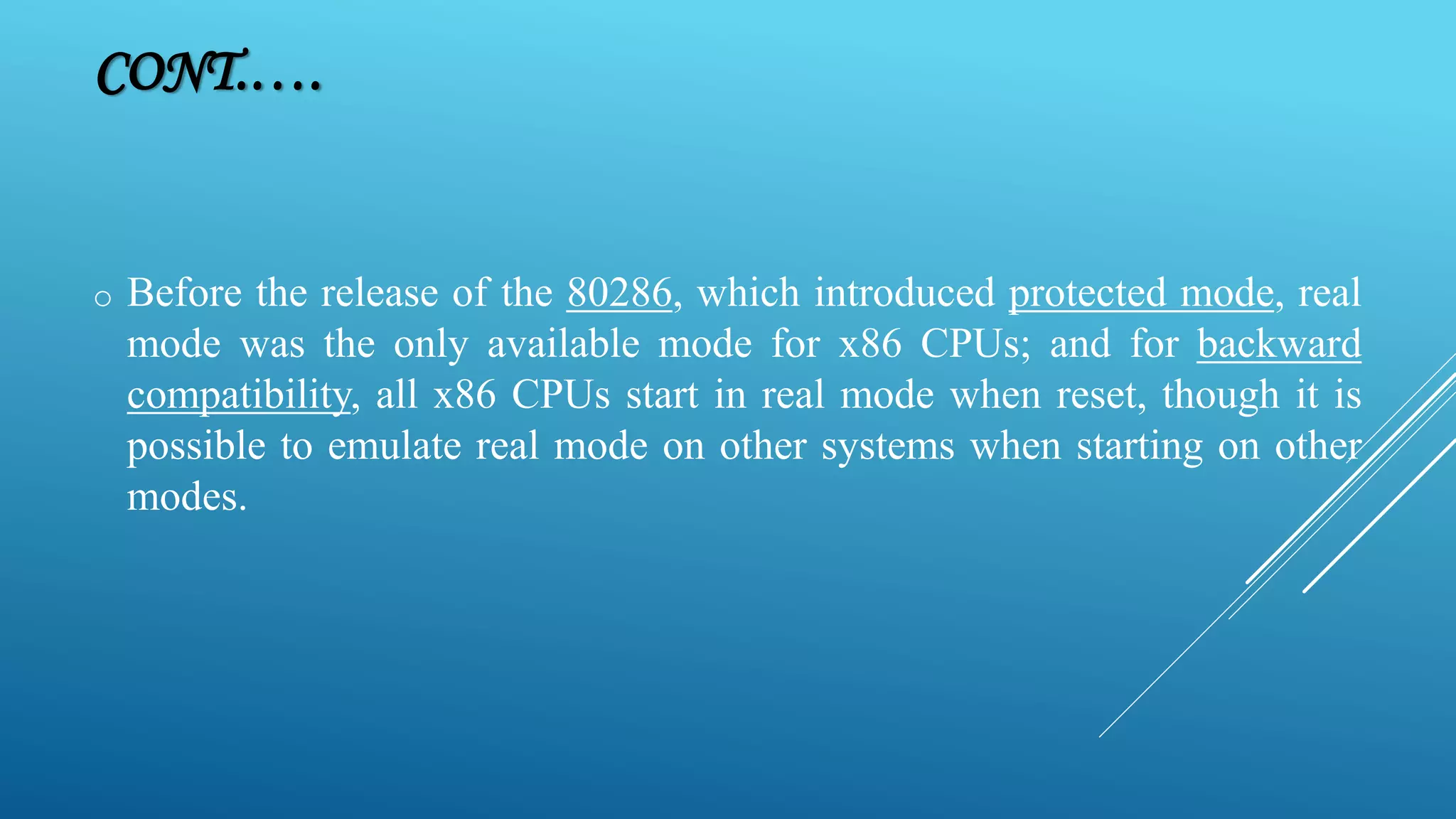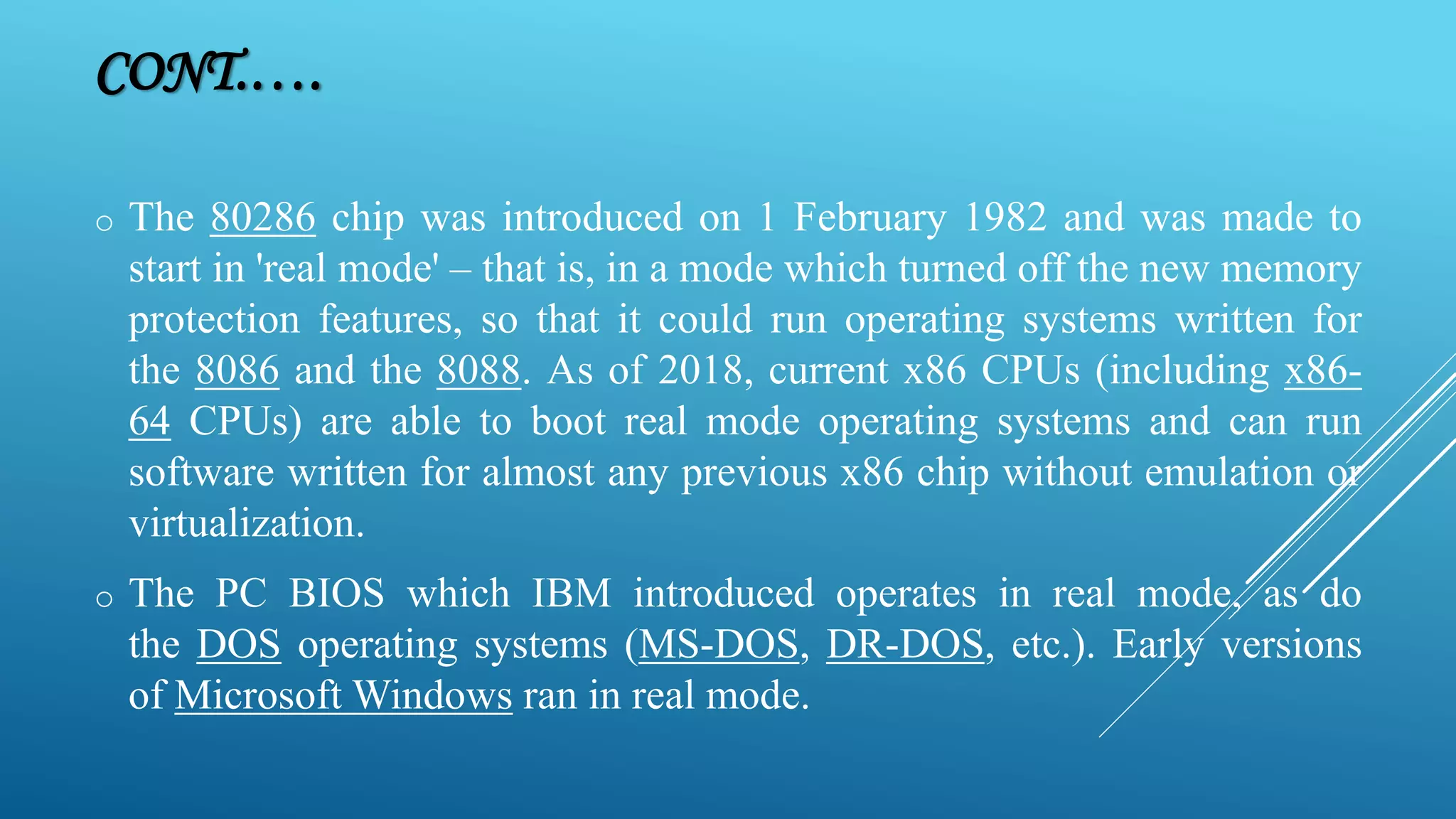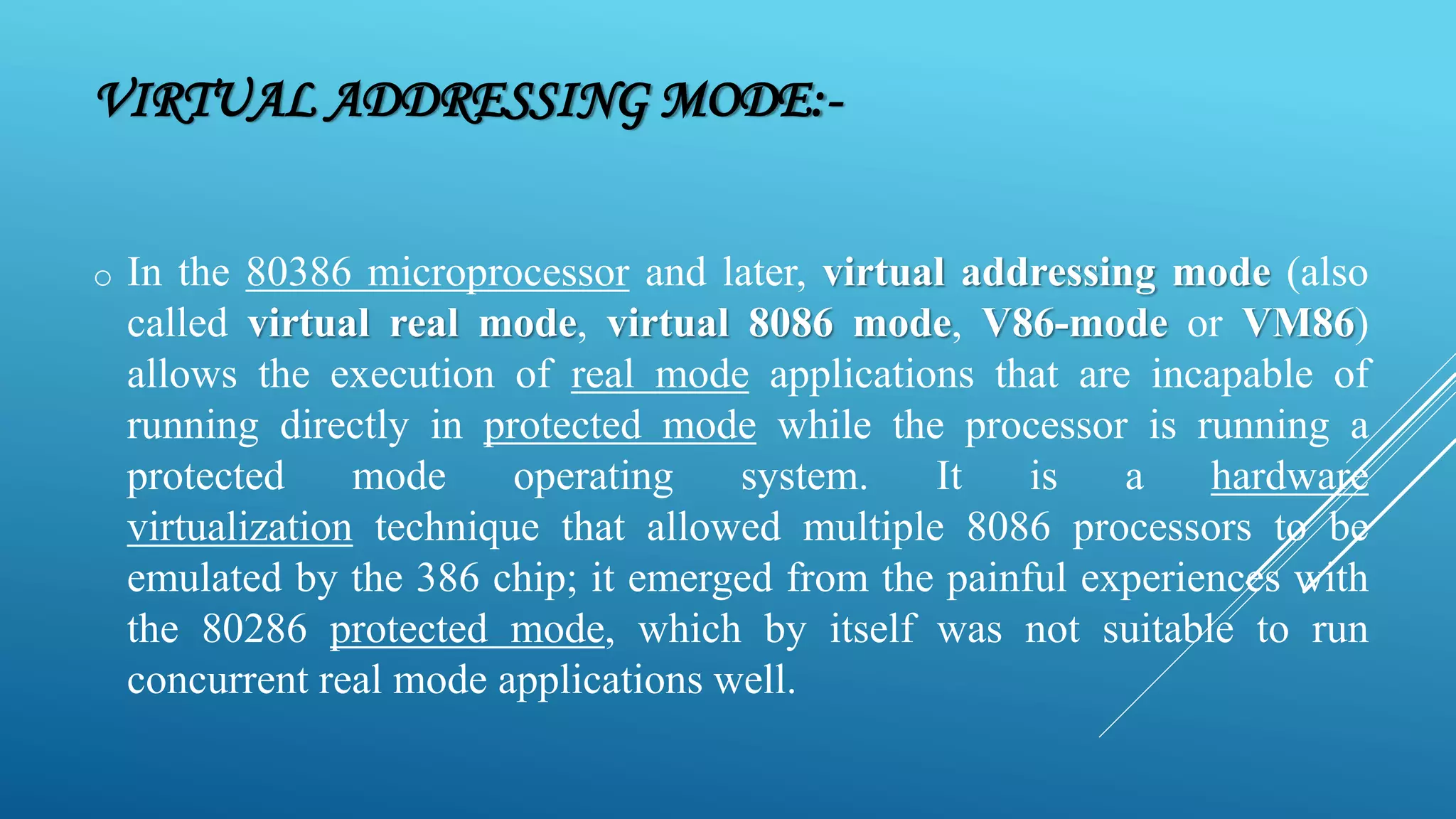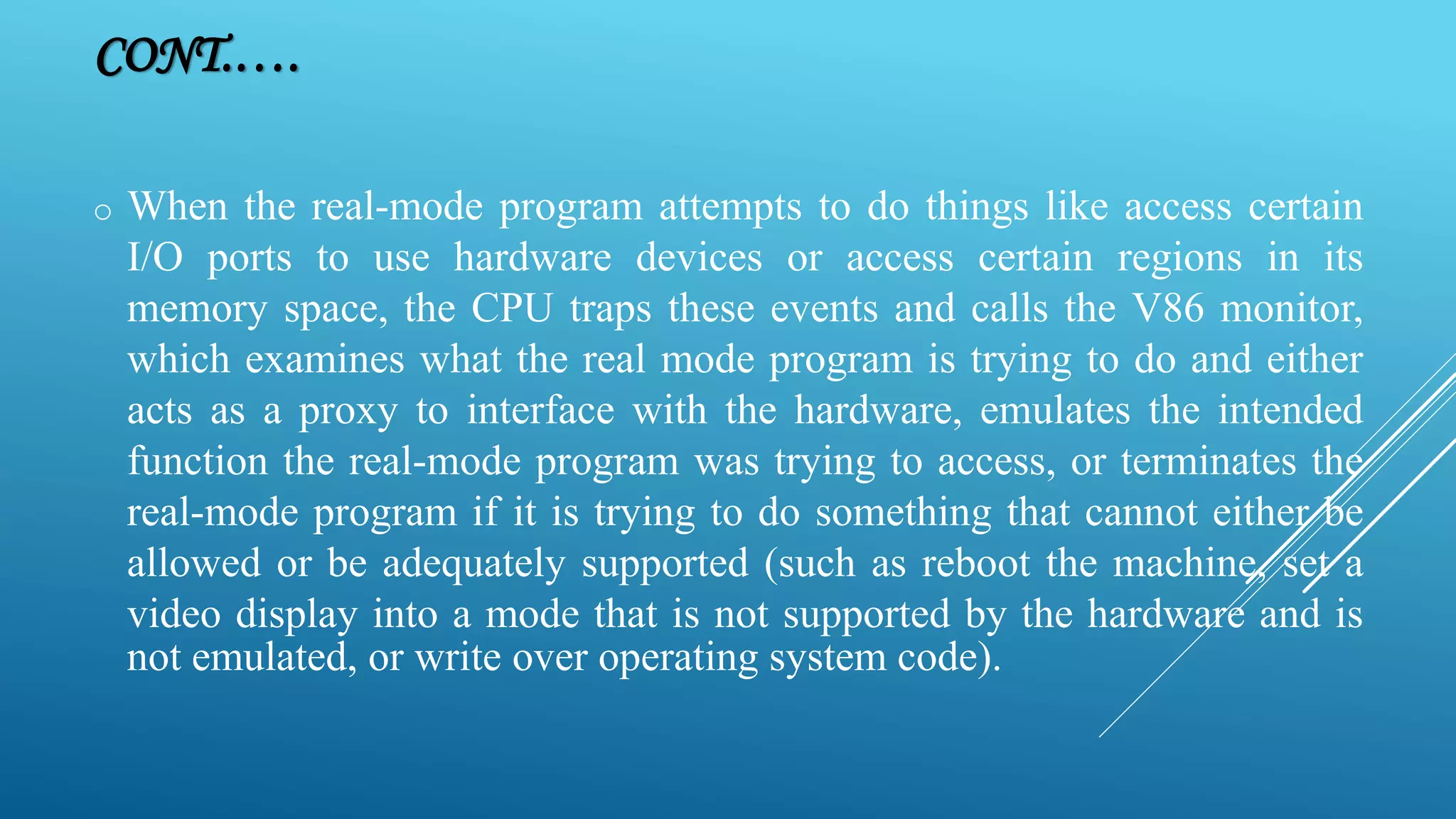This document discusses real addressing mode and virtual addressing mode in computer systems. Real addressing mode provides a 20-bit segmented memory address space of 1 MB and direct access to memory, I/O, and hardware. It was the original mode for x86 CPUs. Virtual addressing mode allows real mode applications to run on protected mode operating systems through hardware virtualization. It uses a segmentation scheme like real mode but subjects addresses to protected mode paging. A virtual 8086 mode monitor manages access between the real mode program and system resources.








